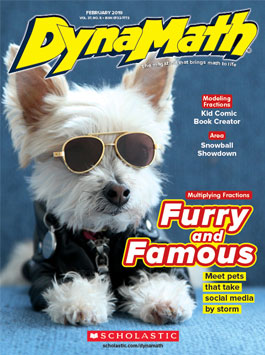What classroom resolutions do you have for the New Year? Are you looking for ideas to revamp student discussions or fresh ways to use technology? Try these fun and engaging strategies to kick off 2020 with a bang!

Easy Classroom Updates for 2020
Start the decade on a high note with these innovative classroom strategies
Jose Luis Pelaez Inc/ DigitalVision/Getty Images
1. Switch Up Student Discussions
Tired of using the same discussion routines and groupings? Try one of these four fresh takes! Each grouping supports different types of student engagement.
- Traverse: Stand in two parallel lines opposite a partner. Change partners by moving one person down to the other end of the line. Great for a quick review of skills.
- Circle: Groups of 6 or more face each other in a circle. Students step inside the circle one at a time to speak to the whole group. Great for summarizing learning after a task.
- Trios: Talk to a partner while a third person listens in and summarizes or critiques the discussion. Good for peer feedback on writing or thinking.
- Onion: Form an inner circle and an outer circle. Those in the inner circle stand back to back, facing a partner in the outer circle. Speak to a new partner by rotating the inner or outer circle. Good for sharing answers and checking student work.
(Learn more about why discussion is important in the math classroom in this post from math coach Melinda Villalovos.)
2. Unlock a Digital Escape Room
Erin Minick
A student works through a question to solve a digital escape room.
In escape-room games, players enter a room with several planted clues and tasks. They work together to solve each puzzle as quickly as they can to unlock the door and “escape.” Create the same experience with your students through “digital escape rooms,” using Google Forms! This is a great activity for reviewing a skill or concept.
- First, select a concept to focus on. Create several questions for students to complete.
- Next, arrange the answers to create a “code.” The code can be a message or a numerical sequence. Be creative! Use Google Forms to create a simple page for students to enter the “code” once they have answered each question.
- Then, print out the questions and place them around the room. Put students into appropriate groups or pairs and give them an allotted amount of time to complete each question.
- Finally, have students use the answers to crack the “code” and enter it into the Google Form to “unlock” the digital escape room. You can provide a reward for teams who complete the challenge in time.
Erin Minick
Two students puzzle out a word problem based on a DynaMath picture.
3. Solve Word Problems with Recycled DynaMath Magazines
Now that you’ve received your December/January issue of Scholastic DynaMath, what can you do with the older issues? Repurpose them! Use old pictures to create all-new word problems.
- Have students cut out pictures that are interesting to them, like these amazing animal eyes from the November 2019 issue, and glue each one on a sheet of paper.
- Have each student write a math word problem to match one of the pictures for their classmates to solve.
- Create a separate answer booklet for students to check their work.
Do you have any new ideas you plan to try in your classroom this year? Email our team at Scholastic and let us know!
Want more elementary math education tips and news? Check out Scholastic's archive.
Erin Minick is a grades 3-5 instructional math coach in the West Shore School District located in New Cumberland, Pennsylvania.
Recent Posts
-
July 7, 2021
SEL in the Math Classroom: Strategies for Resilience
-
January 30, 2019
Make the Most of DynaMath–With Google Classroom!
-
January 8, 2019
Easy Classroom Updates for 2020
-
December 3, 2019
4 Fun Ways to Use Math Around the Holidays
-
September 10, 2019
Fun Math Icebreaker Activity
Exciting ideas and fun teaching strategies for using DynaMath in 3rd, 4th, and 5th grade math classrooms


